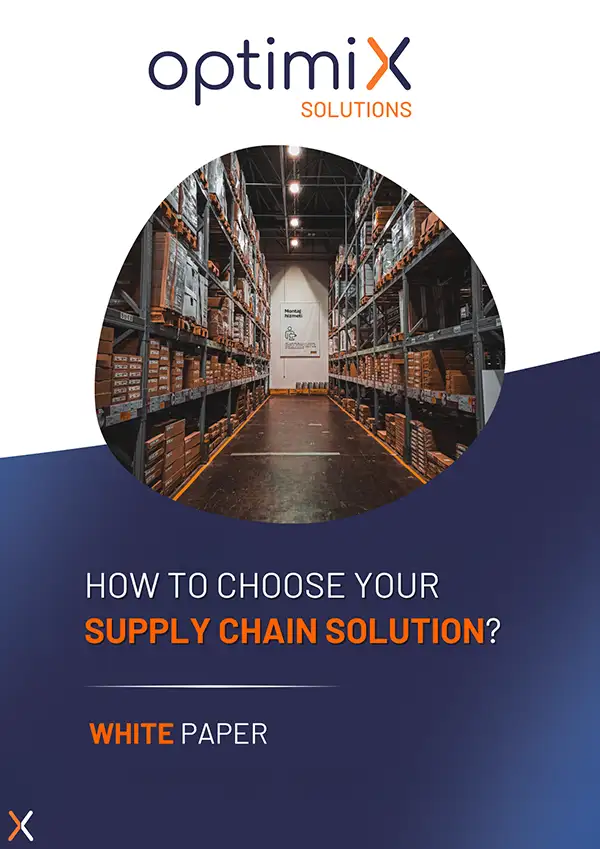In an increasingly volatile environment, marked by short consumption cycles, ever-changing customer expectations and increased pressure on the supply chain, sales accuracy becomes a strategic lever. Yet we often confuse two key notions: the sales forecasting and demand forecasting.
While they share partial tools and objectives, their purpose, logic and orientation differ profoundly. This article offers a better understanding of these differences, illustrating them with the solutions offered by Optimixa leading player in data-driven supply chain, procurement and pricing management.
Sales forecasting: a company-centric approach
Sales forecasting is the oldest and most widespread method used by companies. It is based on the premise that internal historical sales data, sales targets and planned promotions serve as the basis for anticipating future performance. It is therefore closely linked to the company’s organization, resources and strategy.
What is a sales forecast?
Visit sales forecast consists in estimating, at a given moment, the quantities of products that a company expects to sell on a future period. This anticipation is often structured around time series: past trends are extrapolated and adjusted according to known events, such as marketing campaigns, product launches or promotional periods.
The primary objective of this approach is internal planning These include setting sales targets, defining production volumes, organizing supplies and planning human resources. It forms an indispensable basis for the S&OP (Sales and Operations Planning) process and inventory management.
XFR Optimix Forecasting Reflenishment enables you to build robust statistical models based on historical data. Thanks to the integration of business data such as product rotation, point-of-sale typology, stock levels and promotional calendars, the tool dynamically adjusts forecasts to the realities of each network. The tool dynamically adjusts forecasts to the realities of each network. One of the key features is the use of the exponential smoothingan effective forecasting method for smoothing erratic sales fluctuations.
For a textile retailer, for example, Optimix can calculate the weekly quantity to be shipped to each store based on past sales and the sales calendar, while taking into account correlation with factors such as the weather or seasonal promotions.
But this logic remains focused on what the company thinks it can sellsometimes closely linked to its capacity constraints, and not necessarily on what the market is ready to consume. what the market is ready to consume. If you’re wondering about the importance of a sales forecast, we invite you to read our article on it here
Demand forecasting: a customer- and market-oriented vision
Unlike sales forecasting, demand forecasting seeks to understand what consumers would would like to buyindependently of the company’s internal constraints. This approach is resolutely outward-looking.
What is demand forecasting?
The demand forecasting aims to estimate the potential consumption of a product or service, by integrating a wide variety of external factors: economic trends, customer behavior, seasonal effects, weather data, competitive presence, social events, past disruptions, market prices, etc.
It answers a simple but crucial question: if customers had a choice, what would they really consume? This approach is particularly relevant for companies subject to highly variable demand, or whose performance depends on a perfect match between supply and market expectations.
The models used also include linear regressionoften coupled with seasonal coefficients to reflect seasonal seasonal variations observed in consumption cycles.
This approach is particularly useful in sectors where demand is sensitive to external variables, or in omnichannel environments where agility becomes a priority.
Key differences between sales forecasting and demand forecasting
Although the two approaches can complement each other in a comprehensive planning strategy, it’s essential to understand their structural differences.
- Purpose and starting point
- The sales forecast is based on internal internal objectives and data of the company. It is often top-down.
- Demand forecasting is based on exogenous datacustomer behavior and potential consumption. It is more bottom-up.
- Scope of analysis
- Sales forecasts often incorporate internal constraints: production capacity, distribution policy, inventory volumes.
- Demand forecasts are designed to be independent of these constraintsand seek to represent pure demand, “unfiltered” by company limits.
- Granularity level
- Sales forecasts are often drawn up by category, region or channel, depending on internal hierarchical structures.
- Demand forecasts are generally more detailed, sometimes at the level of item / point of sale / dayto enable very localized adjustments.
- Strategic objective
- Sales forecasting is an operational operational management planning, sales targets, budgets.
- Demand forecasting is a tool fordecision-making tool in supply chain management, notably for sizing warehouses, adjusting replenishment levels, or optimizing service rates.
- Technologies and tools used
- Sales forecasting is often based on classic methods that can be manipulated in Excel or a spreadsheet program.
- Demand forecasting exploits advanced technologies: machine learning, predictive models, dynamic dashboards, connected to ERP or software packages supply chain software packages like those offered by Optimix.
Optimix is a perfect example of this possible hybridization. Its software suite combines a commercial vision (sales forecasting) with a customer-oriented vision (demand forecasting). This is one of the reasons why the brands it supports can gain up to 20% in logistics productivityto better organize logistics flows and significantly reduce their breakage rates.
Forecasting sales and forecasting demand are two distinct but complementary exercises. One focuses on sales performance and internal coordination, the other on customer satisfaction and keeping up with consumer trends.
The most mature companies are now adopting an integrated approach, combining the power of internal and external data, using tools such as those offered by Optimixto refine their management and improve their resilience in the face of uncertainty. In a world where agility is becoming a condition of survival, understanding and exploiting the difference between these two types of forecast can make the difference between controlled growth and chronic imbalances.







